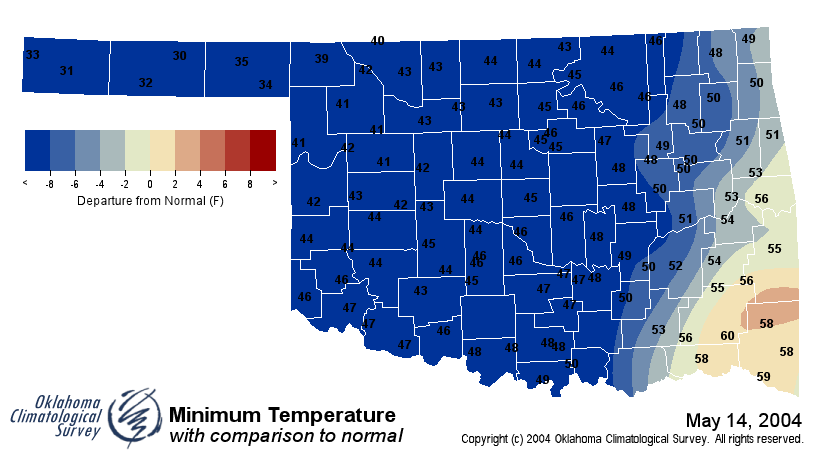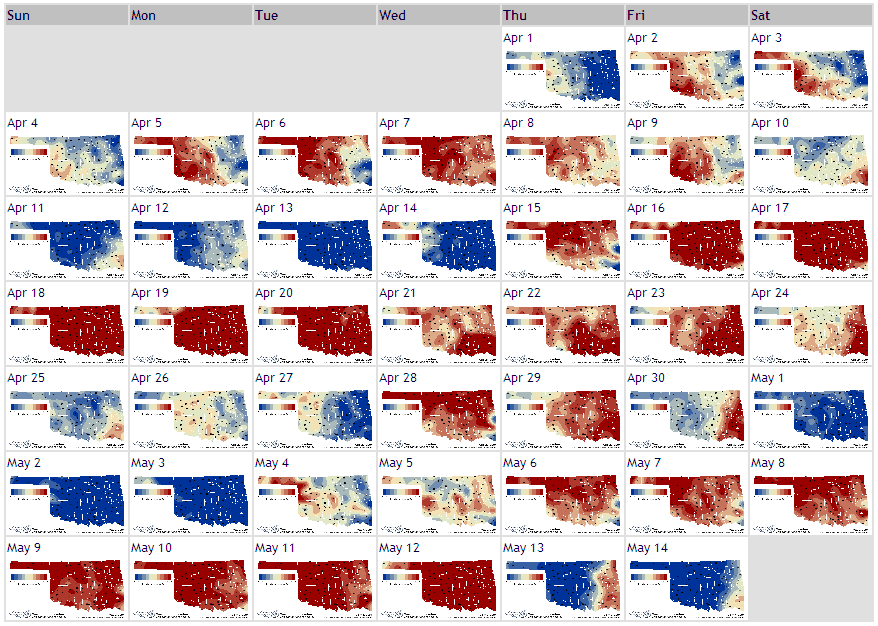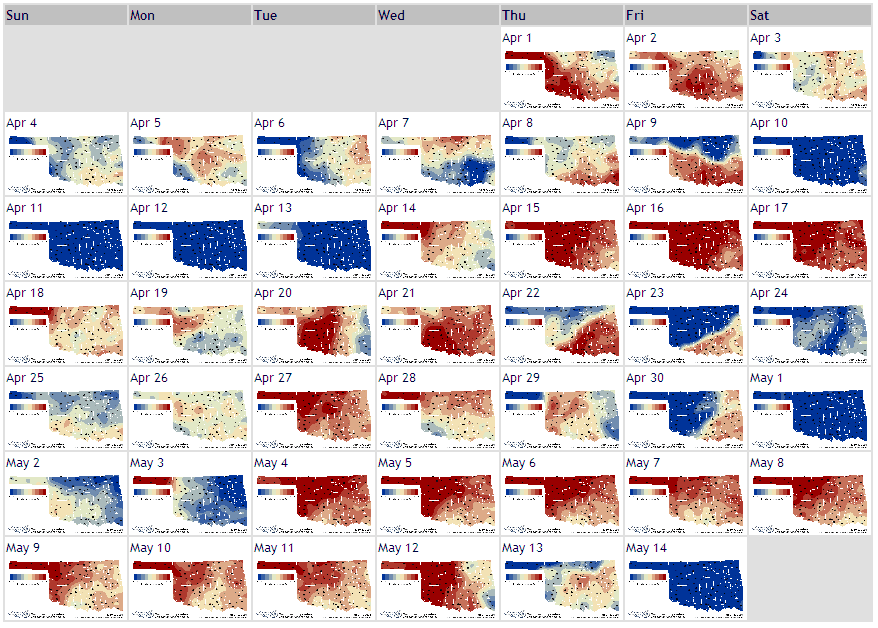Ticker for May 14, 2004
MESONET TICKER ... MESONET TICKER ... MESONET TICKER ... MESONET TICKER ...
May 14, 2004 May 14, 2004 May 14, 2004 May 14, 2004
Cold Front Delivers Chilly Day to Oklahoma
Cold air associated with yesterday's frontal passage made for some
chilly minimum temperatures this morning, and some well-below-normal
afternoon highs. The following maps show today's Mesonet-based lows
and highs, respectively. The reds and blues (mostly blues) show how
those temps relate to normal.


A few features to point out: First, freezing temps were observed in
parts of the panhandle this morning. Second, all of that dark blue
indicates temperatures more than 8 degrees below normal for today.
When "Normal" Really Isn't
The following two graphics show the last few weeks of lows and highs
versus normal:


These graphics make a few subtle but profound statements about our
state's springtime weather.
1. Springtime weather ebbs and flows. The transitional nature
of airmasses is evident in this short history. The colors
alternate from reds to blues on time scales of a few days.
These periods are typically associated with the invasion of
cooler air and a recovery period of several days afterward.
2. Fronts are very apparent. On the maximum temperature calendar,
the dates of April 9th, 22nd, 23rd and 30th show very clearly
the boundary between warm air and cold air.
3. The folly of daily "normals" is exposed. On both calendars,
there are lots of dark blues, lots of dark reds, and not a lot
of in between. So, does this mean that this spring has been a
wild roller coaster of hot and cold? No, not really. In fact,
this spring is a lot like other springs: delightful warmth
interrupted by intermittent cold fronts.
Here's an example: Today's "normal" low temperature for Enid is
56 degrees. That's based on the average value for a 30-year period
(1971-2000). So how normal is normal? Well, in the last 84 years,
Enid has recorded a low of 56 exactly THREE times (1928, 1930 and
1997, for those keeping score at home). And the low has landed in
the 50s forty times ... that means that less than half of history
is even in the 50s! The low has been in the 40s or 60s more often!
So why do we call these averages "normal"? The word's origins lie in
the field of statistics, where "normal" means something very different
than the normal(!) meaning of the word.
Normals do take on much more meaning over longer periods of time.
In other words, a daily temperature that's 10 degrees above normal
is no big deal during the spring in Oklahoma. But if the month of May
comes in 10 degrees above normal, stop the presses!
Anyway, the next time somebody tells you today's springtime temps
are far from "normal", tell them just how normal the day really is!
May 14 in Mesonet History
| Record | Value | Station | Year |
|---|---|---|---|
| Maximum Temperature | 99°F | ALV2 | 2018 |
| Minimum Temperature | 30°F | HOOK | 2004 |
| Maximum Rainfall | 3.44″ | CLOU | 2003 |
Mesonet records begin in 1994.
Search by Date
If you're a bit off, don't worry, because just like horseshoes, “almost” counts on the Ticker website!